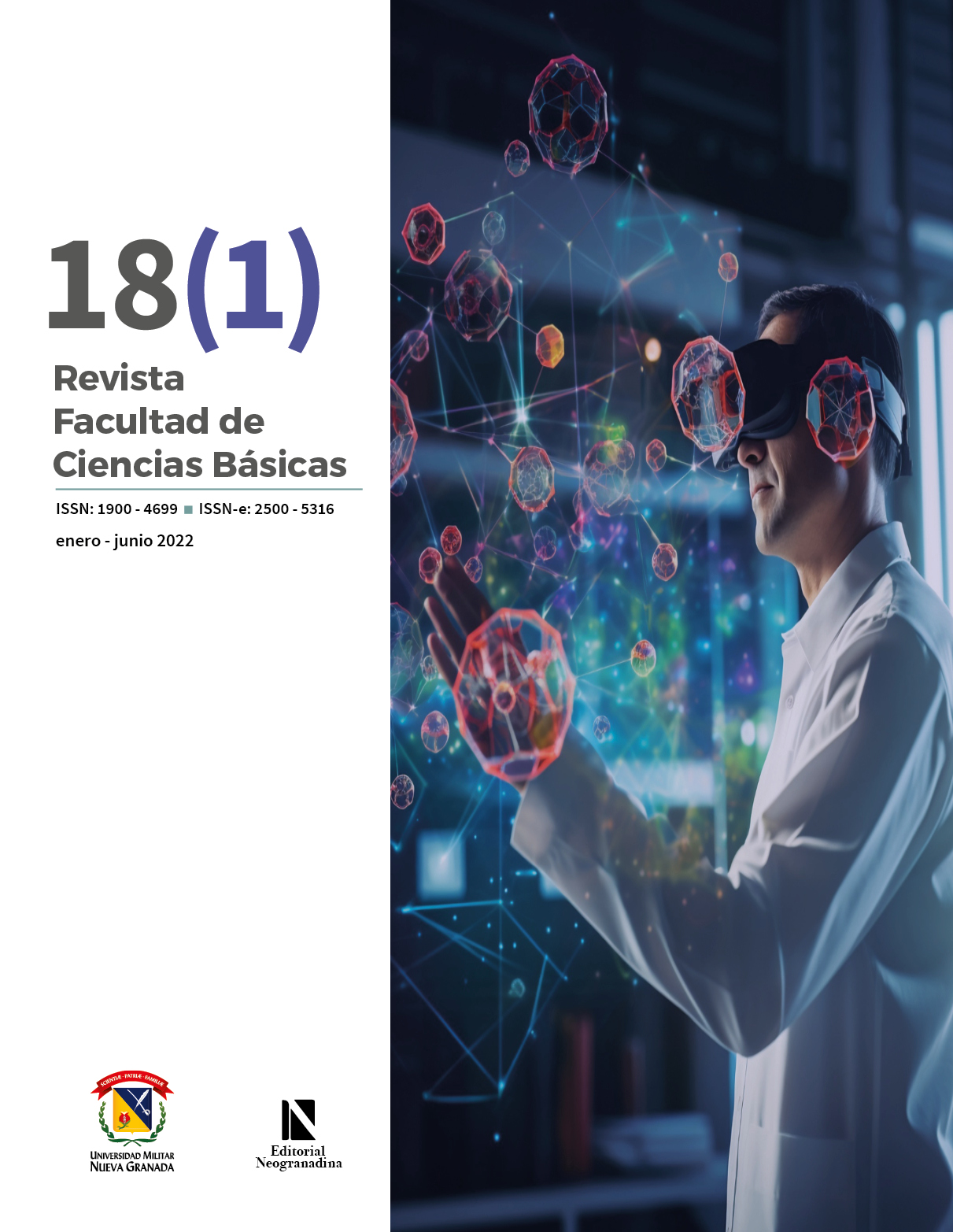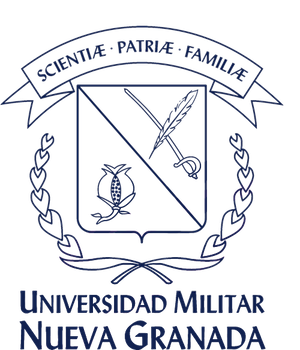Modelo matemático para el control de la transmisión paralela del covid-19 por individuos sintomáticos y asintomáticos
Abstract
A mathematical model based on ordinary differential equations was developed that describes the dynamics of COVID-19 in a human community where infected individuals may or may not be symptomatic and on which public health policies are implemented. With interest in interventions, either by prevention (such as the use of masks, hand hygiene, social distancing) or by treatment (pharmaceutical), it is investigated if the controllable health problem, therefore, the stability and controllability of the solutions of the model based on the basic reproduction number; then, a prevention coverage criterion is established based on the control reproduction number, providing different simulation scenarios for this control measure. The results revealed that prevention is effective in reducing transmission, however, its effectiveness may be reduced by not knowing with certainty the magnitude of the transmission of individuals with the infection but without symptoms and the degree of participation of those who have such a condition. fact that made possible the reappearance of sustained outbreaks of COVID-19.
Downloads
References
T. Phan, “Novel coronavirus: From discovery to clinical diagnostics,” Infection, Genetics and Evolution, vol. 79, no 2020, 2020, doi: 10.1016/j.meegid.2020.104211
J. A. Rodriguez-Morales, D. K. Bonilla-Aldana, G. J. Balbin-Ramon, A. A. Rabaan, R. Sah, A. Paniz-Mondolfi, ... & S. Esposito, “History is repeating itself: Probable zoonotic spillover as the cause of the 2019 novel Coronavirus Epidemic,” Infez Med., vol. 28, no. 1, pp. 3-5, 2020.
V. M. Corman, D. Muth, D. Niemeyer, & C. Drosten, “Hosts and sources of endemic human coronaviruses,” Advances in virus research, vol. 100, pp. 163-188, 2018, doi:10.1016/bs.aivir.2018.01.001
E. E. Walsh, J. H. Shin, & A. R. Falsey, “Clinical impact of human coronaviruses 229E and OC43 infection in diverse adult populations,” The Journal of infectious diseases, vol. 208, no. 10, pp. 1634-1642, 2013, doi:10.1093/infdis/jit393
L. Van Der Hoek, K. Pyrc, M. F. Jebbink, W. Vermeulen-Oost, R. J. Berkhout, K. C. Wolthers, ... & B. Berkhout, “Identification of a new human coronavirus,” Nature medicine, vol. 10, no. 4, pp. 368-373, 2004, doi: 10.1038/nm1024
P. C. Woo, S. K. Lau, C. M. Chu, K. H. Chan H. W. Tsoi, Y. Huang, ... & K. Y. Yuen, “Characterization and complete genome sequence of a novel coronavirus, coronavirus HKU1, from patients with pneumonia,” Journal of virology, vol. 79, no. 2, pp. 884-895, 2005, doi: 10.1128/JVI.79.2.884-895.2005
L. Enjuanes, S. Zuñiga, C. Castaño-Rodriguez, J. Gutierrez-Alvarez, J. Canton, & I. Sola, “Molecular basis of coronavirus virulence and vaccine development,” Advances in virus research, vol. 96, pp. 245-286, 2016, doi: 10.1016/bs.aivir.2016.08.003
P. Zhou, X. L. Yang, X. G. Wang, B. Hu, L. Zhang, W. Zhang, ... & Z. L. Shi, “Discovery of a novel coronavirus associated with the recent pneumonia outbreak in humans and its potential bat origin,” bioRxiv. Cold Spring Harb Lab, pp. 22-914952, 2020, doi: 10.1101/2020.01.22.914952
B. Meyer, M. A. Müller, V. M. Corman, C. B. E. M. Reusken, D. Ritz & G. Godeke, “Antibodies against MERS Coronavirus in Dromedaries. United Arab Emirates,” Emerg Infect Dis., vol. 20, no. 4, pp. 552-559, 2014.
E. S. A. Barrera, R. G. Pliego, J. E. Raya, J. C. Basurto, & J. G. Machorro, “Coronavirus de tipo 2 causante del síndrome respiratorio agudo severo, un virus que llegó para quedarse,” Revista Mexicana de Mastología, vol. 11, no. 1, pp. 9-17, 2021.
C. Wang, P. W. Horby, F. G. Hayden & G. F. Gao, “A novel coronavirus outbreak of global health concern,” The lancet, vol. 395, no. 10223, pp. 470-473, 2020, doi: 10.1016/S0140-6736(20)30185-9
N. Chen, M. Zhou, X. Dong, J. Qu, F. Gong, Y. Han, ... & L. Zhang, “Características epidemiológicas y clínicas de 99 casos de neumonía por el nuevo coronavirus de 2019 en Wuhan, China: un estudio descriptivo,” Lancet, vol. 395, no. 10223, pp. 507-513, 2020.
S. Jiang, S. Xia, T. Ying & L. Lu, “A novel coronavirus (2019-nCoV) causing pneumonia-associated respiratory syndrome,” Cellular & molecular immunology, vol. 17, no. 5, pp. 554-554, 2020, doi: 10.1038/s41423-020-0372-4
M. L. Holshue, C. DeBolt, S. Lindquist, K. H. Lofy, J. Wiesman, H. Bruce, ... & S. K. Pillai, “First case of 2019 novel coronavirus in the United States,” New England journal of medicine, vol. 382, no. 10, pp. 929-936, 2020, doi: 10.1056/NEJMoa2001191
F. Di Gennaro, D. Pizzol, C. Marotta, M. Antunes, V. Racalbuto, N. Veronese, & L. Smit, “Coronavirus diseases (COVID-19) current status and future perspectives: a narrative review,” International journal of environmental research and public health, vol. 17, no. 8, pp. 2690, 2020, doi: 10.3390/ijerph17082690
F. J. Díaz-Castrillón & A. I. Toro-Montoya, “SARS-CoV-2/COVID-19: The virus, the disease and the pandemic,” Medicina & laboratorio, vol. 24, no. 3, pp. 183-205, 2021.
S. Lee, T. Kim, E. Lee, C. Lee, H. Kim, H. Rhee, ... & T. H. Kim, “Clinical course and molecular viral shedding among asymptomatic and symptomatic patients with SARS-CoV-2 infection in a community treatment center in the Republic of Korea,” JAMA internal medicine,” vol. 180, no. 11, pp. 1447-1452, 2020, doi:10.1001/jamainternmed.2020.3862
L. Chaw, W. C. Koh, S. A. Jamaludin, L. Naing, M. F. Alikhan, & J. Wong, “Analysis of SARS-CoV-2 transmission in different settings, Brunei,” Emerging infectious diseases, vol. 26, no. 11, pp. 2598-2606, 2020, doi:10.3201/eid2611.202263
D. McEvoy, C. McAloon, A. Collins, K. Hunt, F. Butler, A. Byrne, ... & S. J. More, “Relative infectiousness of asymptomatic SARS-CoV-2 infected persons compared with symptomatic individuals: a rapid scoping review,” BMJ open, vol. 11, no. 5, pp. e042354, 2021, doi:10.1101/2020.07.30.20165084
M. Egger, L. Johnson, C. Althaus, A. Schöni, G. Salanti, N. Low & Norris S. L, “Developing WHO guidelines: time to formally include evidence from mathematical modelling studies,” F1000Research, vol. 6, no. 0, pp. 1584, 2017, doi: 10.12688/f1000research.12367.2
A. J. Kucharski, T. W. Russell, C. Diamond, Y. Liu, J. Edmunds, S. Funk, ... & S. Flasche, “Early dynamics of transmission and control of COVID-19: a mathematical modelling study,” The lancet infectious diseases, vol. 20, no. 5, pp. 553-558, 2020, doi: 10.1016/S1473-3099(20)30144-4
B. Tang, X. Wang, Q. Li, N. L. Bragazzi, S. Tang, Y. Xiao & J. Wu, “Estimation of the transmission risk of the 2019-nCoV and its implication for public health interventions,” Journal of clinical medicine, vol. 9, no. 2, pp. 462, 2020, doi: 10.3390/jcm9020462
E. Díaz, R. A. Menéndez, P. V. Cortés, M. G. Escapa, B. Suberviola, A. S. Lázaro, ... & M. C. González, “Tratamiento farmacológico de la COVID-19: revisión narrativa de los Grupos de Trabajo de Enfermedades Infecciosas y Sepsis (GTEIS) y del Grupo de Trabajo de Transfusiones Hemoderivados (GTTH),” Medicina intensiva, vol. 45, no. 2, pp. 104-121, 2021 doi: 10.1016/j.medin.2020.06.017
World Health Organization, WHO living guideline: drugs to prevent COVID-19: interim guidance, 2 March 2021 (No. WHO/2019-nCoV/prophylaxes/2021.1). World Health Organization, 2021, Recuperado de https://www.who.int/publications/i/item/WHO-2019-nCoV-prophylaxes-2021-1
M. W. Hirsch, S. Smale, and R. L. Devaney, Differential Equations, Dynamical Systems, and an Introduction to Chaos. New York: Academic Press, 2012.
T. Myint-U, Ordinary differential equations. New York: North Holland, 1978.
B. Aguirre Hernández, C. A. Loredo-Villalobos, E. C. Díaz-González & E. Campos-Cantón, “Estabilidad de sistemas por medio de polinomios Hurwitz”, Revista de Matemática: Teoría y Aplicaciones, vol. 24, no. 1, pp. 61-77, 2017, doi: 10.15517/rmta.v24i1.27751
N. Rouche, P. Habets & M. Laloy, Stability theory by Liapunov's direct method, vol. 4. New York: Springer-Verlag, 1977.
H. K. Khalil & J. W. Grizzle, Nonlinear systems, vol. 3. Upper Saddle River, NJ: Prentice hall, 2002.
H. Leiva, “Rothe’s fixed point theorem and controllability of semilinear nonautonomous systems”, Systems & Control Letters, vol. 67, no. 2014, pp. 14-18. doi: http://dx.doi.org/10.1016/j.sysconle.2014.01.008
A. Chang, “An algebraic characterization of controllability,” IEEE Transactions on Automatic Control, vol. 10, no 1, pp. 112-113, 1965, doi: 10.1109/TAC.1965.1098056
H. Leiva, “Rothe’s fixed point theorem and controllability of semilinear nonautonomous systems,” Systems & Control Letters, vol. 67, no. 2014, pp. 14-18, 2014, doi: http://dx.doi.org/10.1016/j.sysconle.2014.01.008
W. O. Kermack & A. G. McKendrick, “A contribution to the mathematical theory of epidemics,” Proceedings of the royal society of london. Series A, Containing papers of a mathematical and physical character, vol. 115, no. 772, pp. 700-721, 1927, doi: 10.1098/rspa.1927.0118
C. N. Ngonghala, E. Iboi, S. Eikenberry, M. Scotch, C. R. MacIntyre, M. H. Bonds & A. B. Gumel, “Mathematical assessment of the impact of non-pharmaceutical interventions on curtailing the 2019 novel Coronavirus,” Mathematical biosciences, vol. 325, no. 2020, pp. 108364, 2020, doi: 10.1016/j.mbs.2020.108364

Copyright (c) 2023 Revista Facultad de Ciencias Básicas

This work is licensed under a Creative Commons Attribution-NonCommercial-NoDerivatives 4.0 International License.











